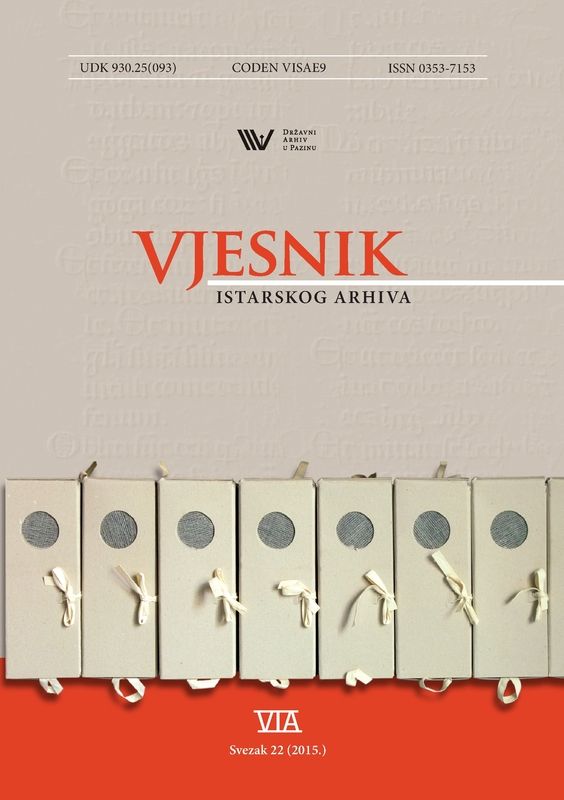Presbyter, uxor, dominus, magister... Internal differentiation and identities of the Labin social groups during the Middle Age and the Early Modern Period – semiotics and practice
Keywords:
Collective and individual identities, social differentiations, Labin, Early and Mid Modern PeriodsAbstract
Building on relevant sources and the existing expert and scientific literature, the article makes a conclusion on the development of communal identity of Labin during Early and Mid- Modern periods and breaks down linguistic signs of social belonging of the members of the commune whereby these signs developed in certain socio-historical conditions and were recorded in the advised sources, primarily local registers. An analysis of the sources of medieval and early modern origin created in the offices of Labin and elsewhere, has confirmed certain ethnocultural elements of the collective identity of the population, their dynamics and relationships. It also allowed an overview of the development of the communal identity and its pragmatic implications shaped into specific forms of communal magistratures and autonomy in relation to the head office of the supreme political government. The article assesses other contributions to the building of collective identity, such as those hagiological, as well as the participation of the individual and his immanent social group in the shaping and enjoying of the pre-modern model of communal identification. The registers of baptisms, deaths and marriages bring testimony of the system of linguistic signage engaged in the identification of each member of the community in line with his social role and identity of his corresponding social group. The Commune of Labin, developed institutionally on the municipal foundations and with the contribution of the political and cultural heritage of the majority Slavic population, started to clearly differentiate its own social groups in accordance with the usual communal pattern probably as early as in the 13th century, through the following centuries and then in the 15th century under the Venetian influence. Sources thus bear testimony of local civic aristocracy, clergy, citizens and other people, immigrants, men and women, children etc. and of their corresponding social roles.
Downloads
Published
Issue
Section
License

This work is licensed under a Creative Commons Attribution-NonCommercial 4.0 International License.

